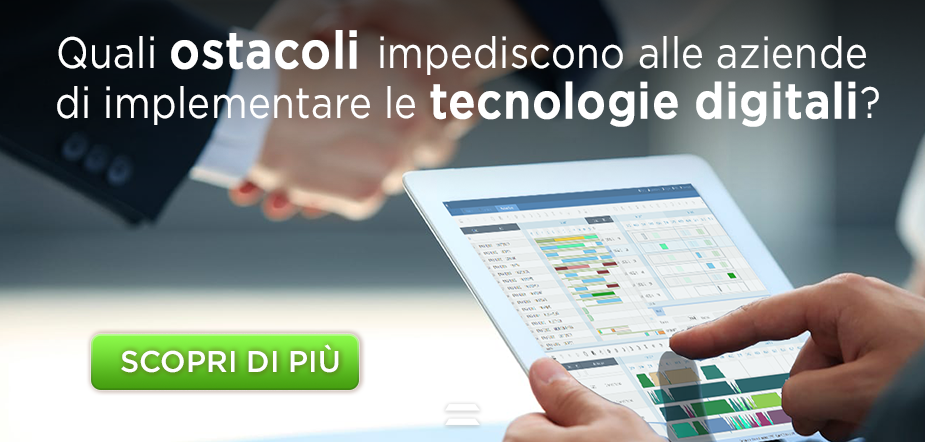When a company decides to implement a new digital technology, it often encounters obstacles on its way and these are not necessarily due to the new solution to be implemented, but to the company itself and to the existing architectures. Let’s analyze what obstacles they are and how to overcome them.
Whatis a digital strategy?
Digital strategy means the adoption by a company of a new digital technology. The main obstacles that companies find in their path, in the implementation of these digital technologies are mainly three:
- inability to experiment quickly;
- inability to work between departmental “silos”;
- systems present.
Defects of existing systems in organizations
The obstacle that is represented by the systems already present and existing in the company should not be surprising. Many large companies unfortunately continue to struggle with too many instances of the same ERP system or, even worse, with countless versions of different ERP systems. Very often, therefore, the reason why companies do not have time and money to invest in new digital opportunities is because these resources are used by existing systems.
Often, however, the real problem arises from the fact that, in order to respond responsively to the market, the information is extracted from the management system and brought to numerous Excel spreadsheets. Over time, this structure tends to grow and ruin the company’s information flow by creating gaps in data and inconsistent, obsolete or often even incorrect data.
The end-to-end process
Supply Chain is an end-to-end process that allows products and services to be delivered, produced and distributed to customers. In order to have visibility and control of this process, it is therefore necessary to detach the related operations from the functional silos and instead orient them towards an end-to-end cross-process perspective. The process orientation is usually preferred to the satisfaction of external customers and the latter is preferred to the functional orientation which often causes an irremediable inward focus.
This is because end-to-end processes:
- follow the value creation process from start to finish, often crossing numerous functional boundaries, from customer development to logistics to finance;
- they do not stop at company walls but rather include front-end interactions with suppliers and customers;
- transparently link front-end processes with back-end processes.
The design, transformation and management of these end-to-end processes requires the support of specific knowledge and tools. What can be noted in particular globally is that advanced applications for production planning and scheduling (also known as APS) are increasingly appreciated in manufacturing companies.
Hope in the form of APS software
If the presence of departmental silos slows down processes and reduces business performance and the use of Excel is rooted in processes, then it is appropriate to consider the implementation of APS software for demand and production planning processes. APS software helps industrial companies do more with less and share what is being done across departments (learn more about “whatis an APS system”). These solutions can then drive innovation of processes and systems by doing rapid experiments and, if these prove to be fruitful, grow and share them quickly.
